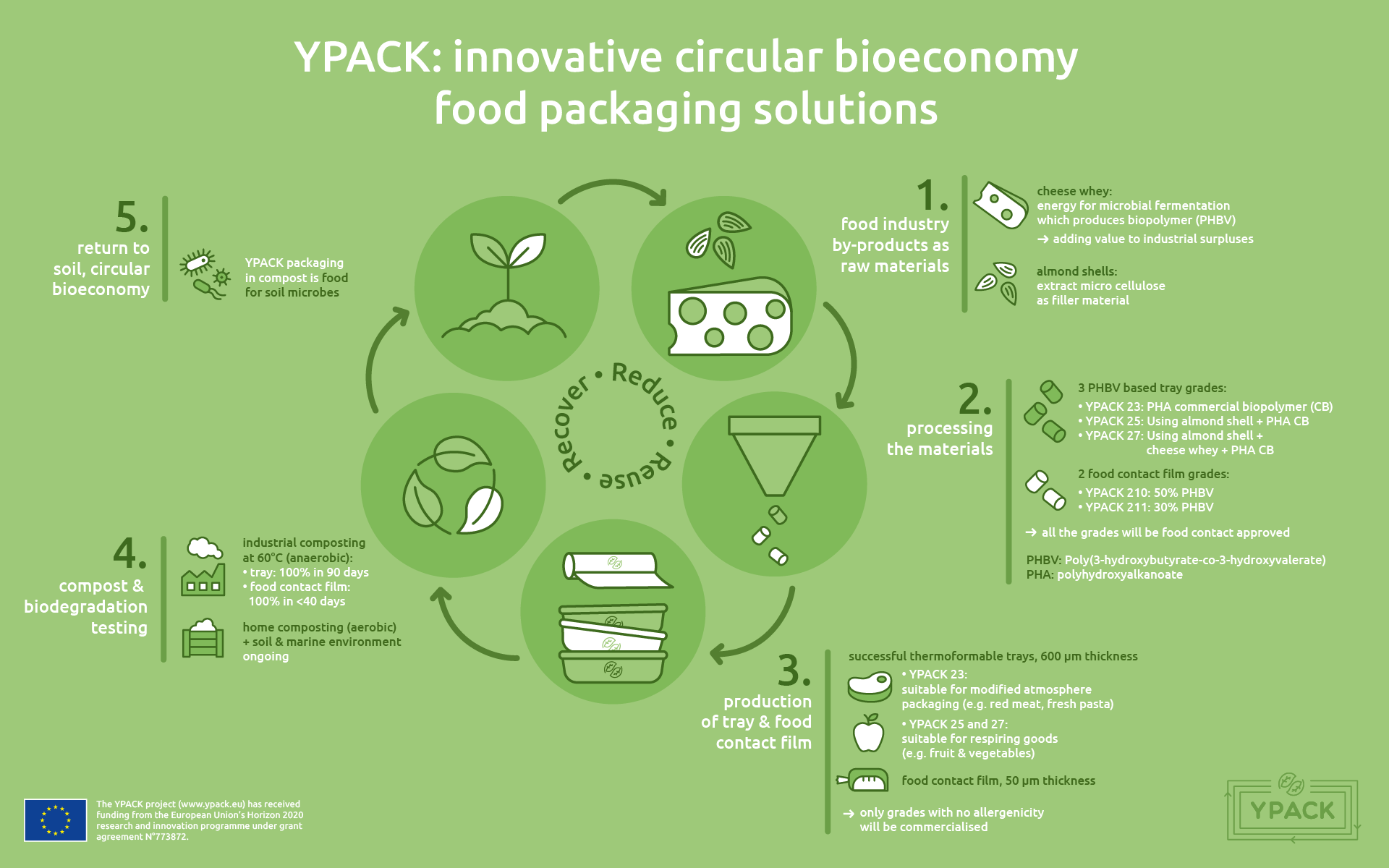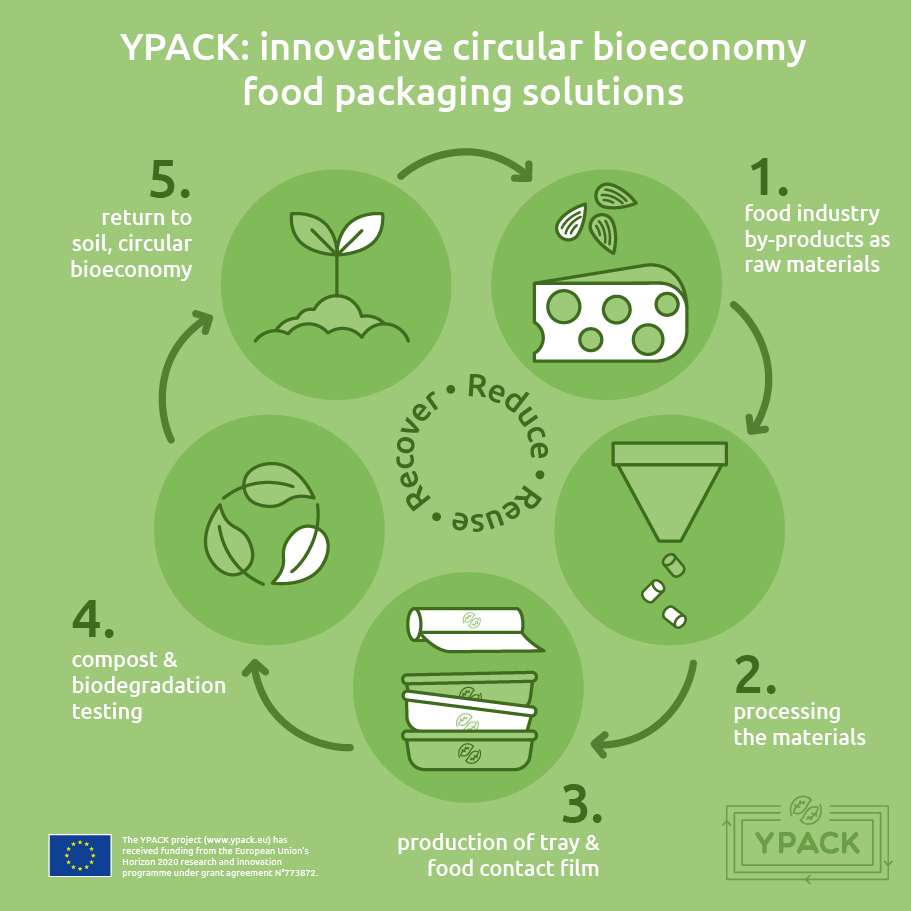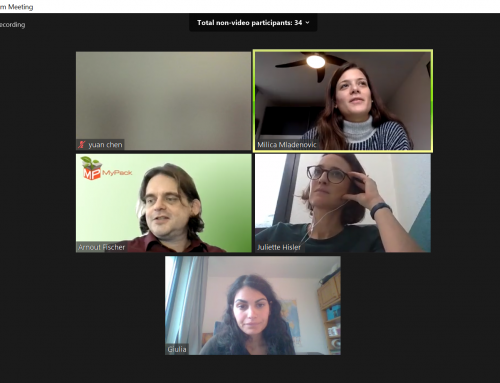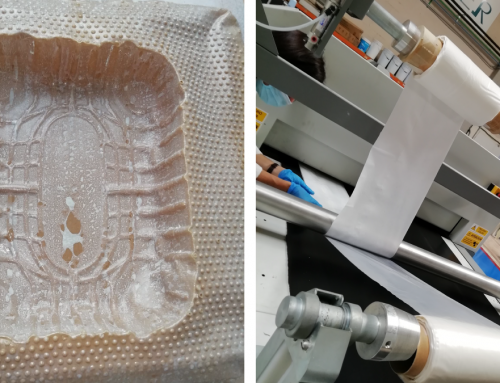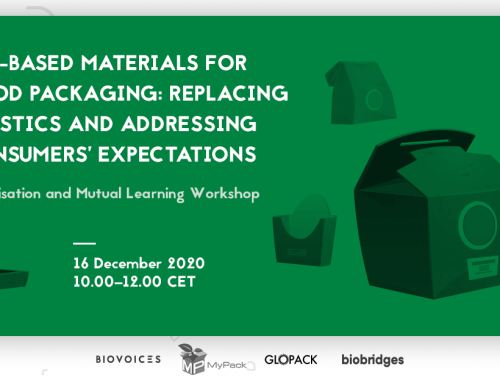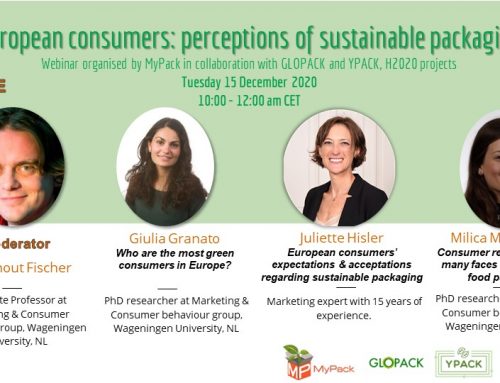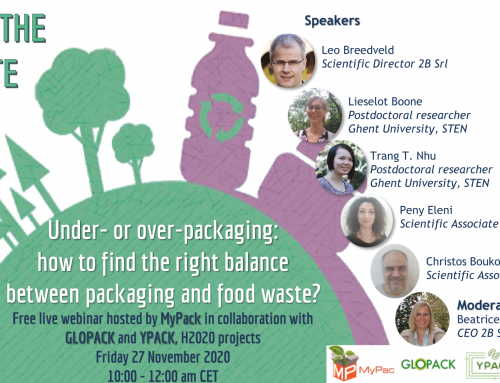According to the European Commission, circular economy is defined as an economic space where the value of products, materials and resources are maintained in the economy for as long as possible and the generation of waste is minimised. Bioeconomy is defined as the production of renewable biological resources and the conversion of these resources and waste streams into value added products. The Circular Bioeconomy is defined as the intersection of bioeconomy and circular economy.
This infographic explains how the YPACK packaging fits into a circular bioeconomy.
- We obtain materials from food industry by-products: microcellulose from almond shells and PHBV biopolymer extracted from cheese whey by microbial fermentation.
- Using these materials, we increase their value by creating different grades of YPACK material. The YPACK project has developed three trays and two food contact films with different material compositions, giving them several food preservation abilities.
- The packaging can be used for both modified atmosphere packaging or respiring goods.
- Due to the biodegradability grade of PHBV, the YPACK packaging has been confirmed as compostable in industrial conditions (60°C, anaerobic) within 90 days. Further, the YPACK team has seen promising results from tests done so far for home composting as well as biodegradation in soil and marine environment.
- At the end of its life cycle, the biodegraded YPACK packaging serves as food for soil microbes that, who knows, could later be used for microbial fermentation, and produce PHBV again…

